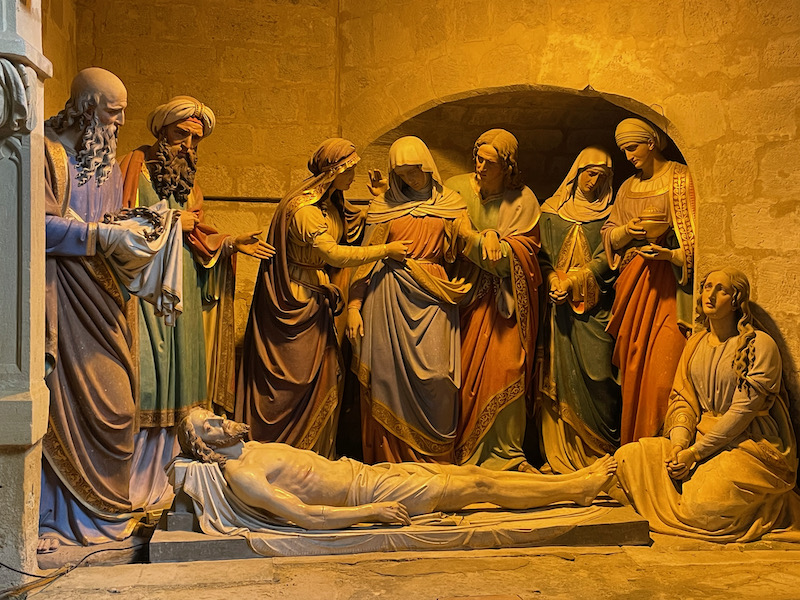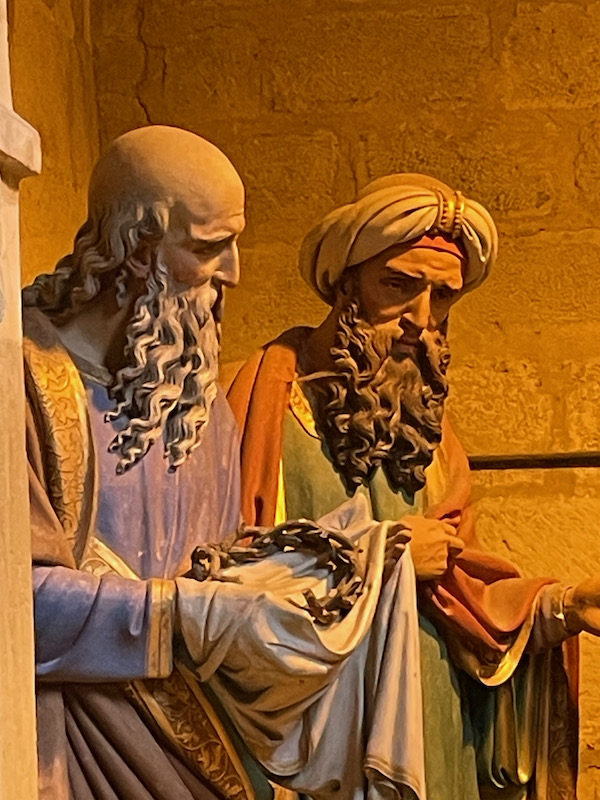Our Blog - Loop Trip - Marciac, France
A few years ago, we went to a concert in Toulouse by Wynton Marsalis, the jazz trumpeter. It was at that time that we first heard of "Jazz in Marciac", which is a 3-week jazz festival created in 1978 that takes place every summer in this little town of Marciac. Not quite sure how this town of 1200 people welcomes tens of thousands of spectators every year for the festival, but it does! Wynton is now the official ambassador of this festival and has attended every year since 1991 (and does a few concerts around in the larger cities, like Toulouse, on the side). Some of the more well-known (at least for us) musicians that have participated (in addition to Wynton Marsalis) include Carlos Santana, Ray Charles, Joan Baez, Sting, Al Jarreau, Herbie Hancock, and Dizzy Gillespie.
A royal bastide was founded here in 1298, originally surrounded by a wall with 8 gates, turrets, and a large moat. If you look at a Google Map of the town, you can clearly see the ring road where the walls used to be. This is very common ... the walls come down to allow expansion of the town and where the wall was makes a perfect place for a ring road around the "old town". In the middle of the old town is a large central square bordered by houses with an arched gallery. This is where the free concerts take place during the Jazz festival.
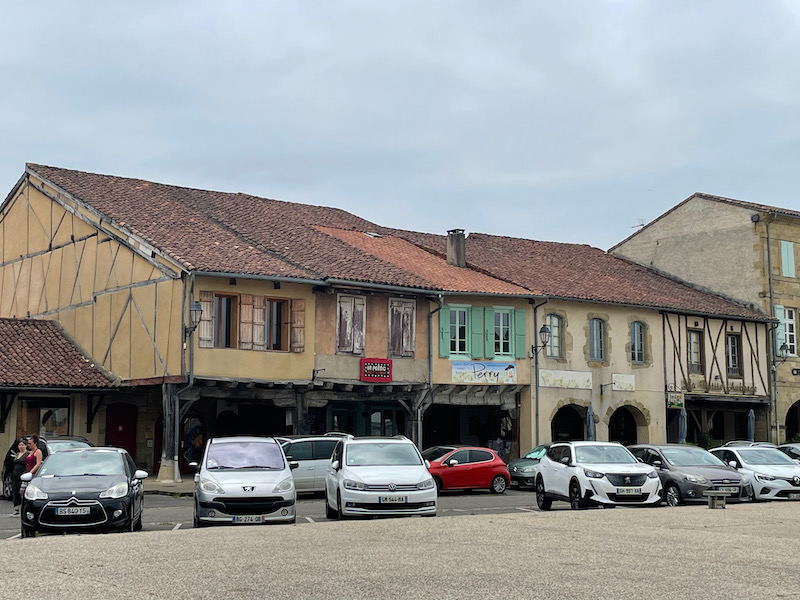
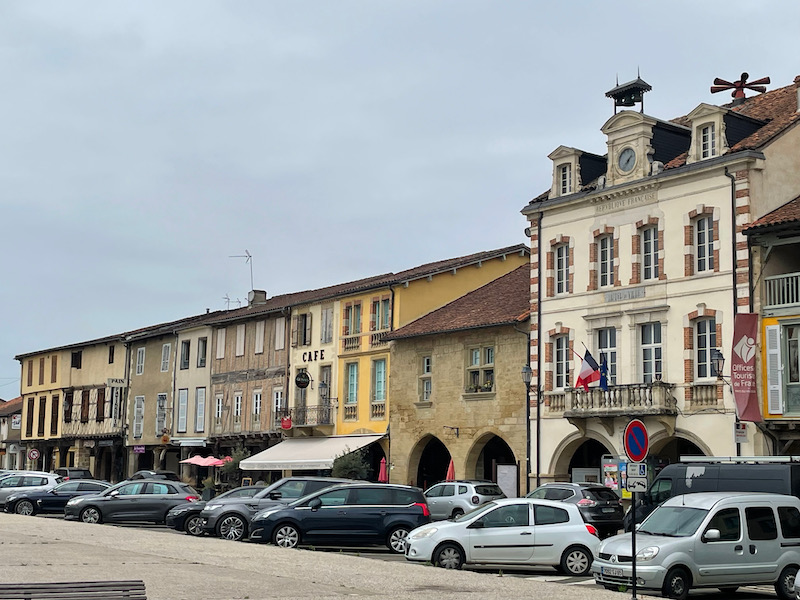
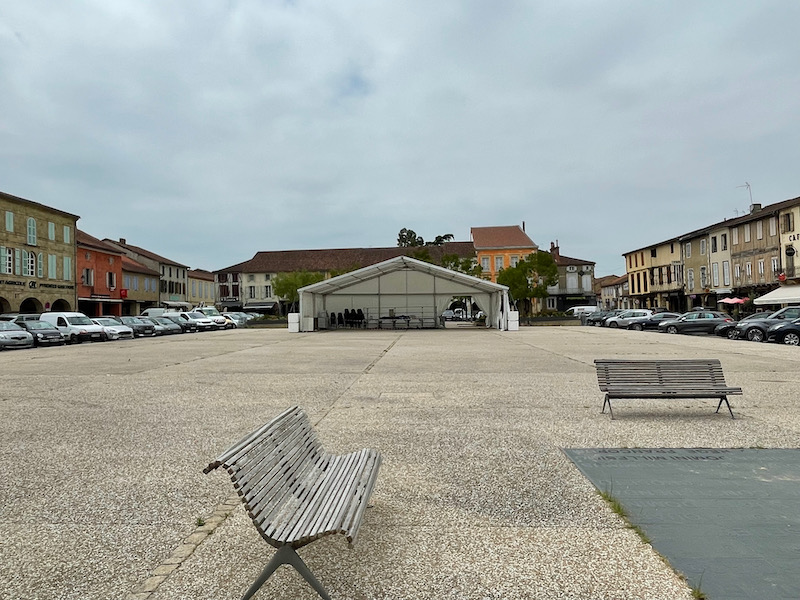
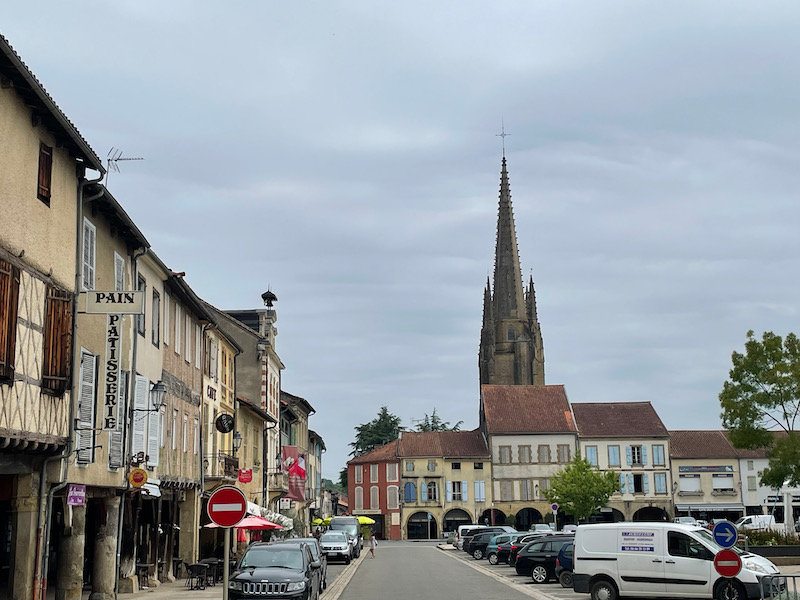
On one side of the square is the 3-story town hall (Hotel de Ville). It is called the "Guichard house" for Guichard Marciac, who was the Seneschal of Toulouse at the end of the Gascon wars, and gave the name to the town. The small stone building next door, with the mullioned windows, was the old house of the abbots of the Abbey of La Case-Dieu. The abbey was founded in 1135 but was destroyed at the end of the 18th century.
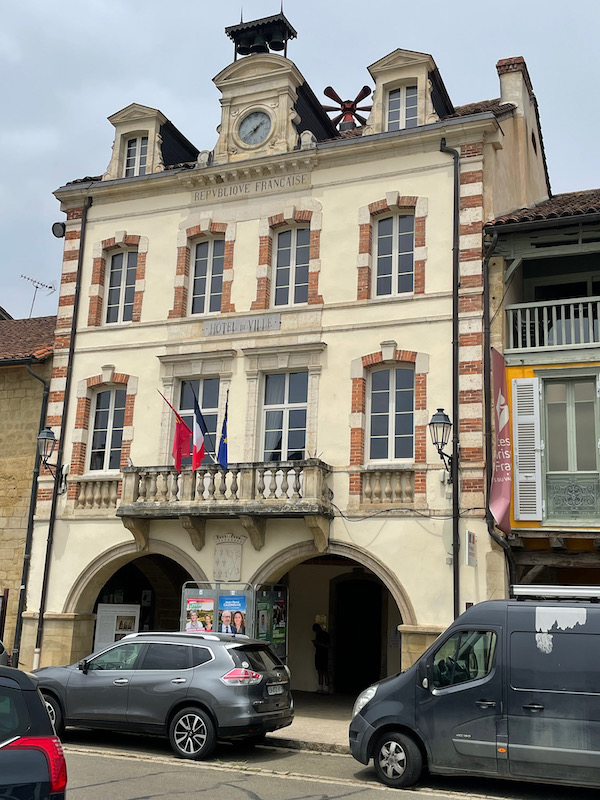
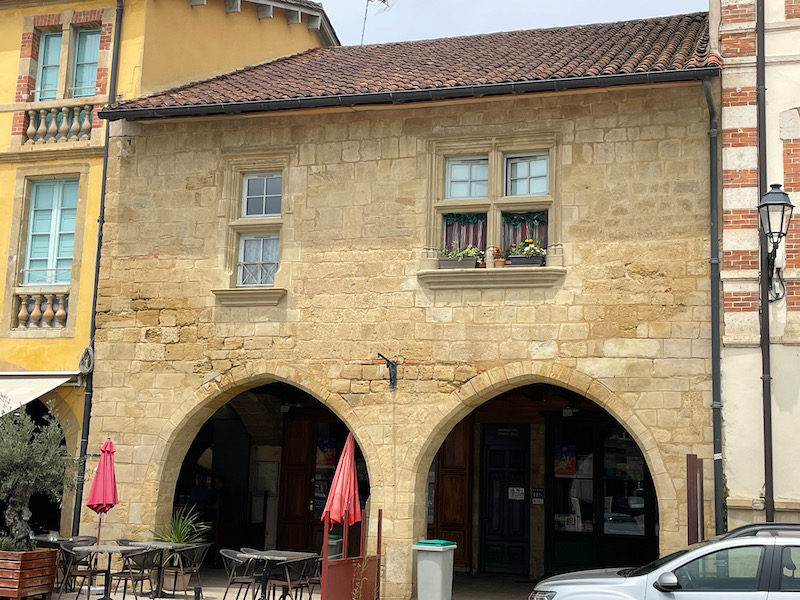
Not a historical site, but this street sign which points the way to the "collège Aretha Franklin". A "collège" in France is like a middle school in the US, and this middle school in Marciac, which has around 200 students, was renamed in 2019 for the famous American singer. Based on an article that I found about the renaming, it was the 3rd school in the Gers department that had been named for her.
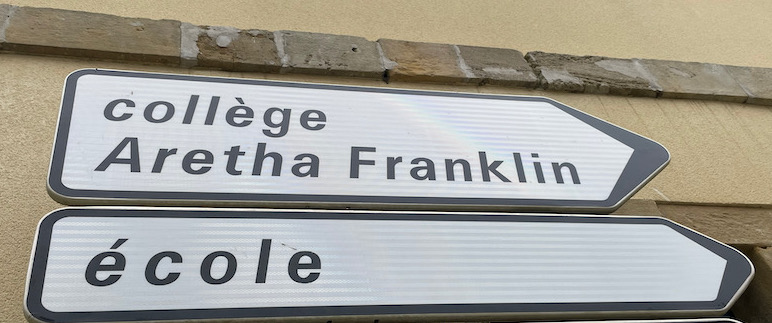
Sometimes, you come across weird things in these old towns, and sometimes, the town even has a plaque that tells you what it is. Otherwise, we would have probably never even noticed. This is a "boîte à corde" (literally a "rope box"), which is one of the last visible vestiges of the old oil lamp lighting system in town. At the bottom is this box, built inside of the exterior wall of the building, which had a door that was closed and locked (which is gone today). A rope would go up from this box to an oil lamp that was mounted several feet above (similar to the electric light today). A worker would come by with a key, open the box, and lower the lantern using the rope system. He then would do his daily work, including cleaning/replacing parts and filling the oil reservoir. Then he would pull the rope to raise the lamp back into place above him, secure the rope, and lock the door.
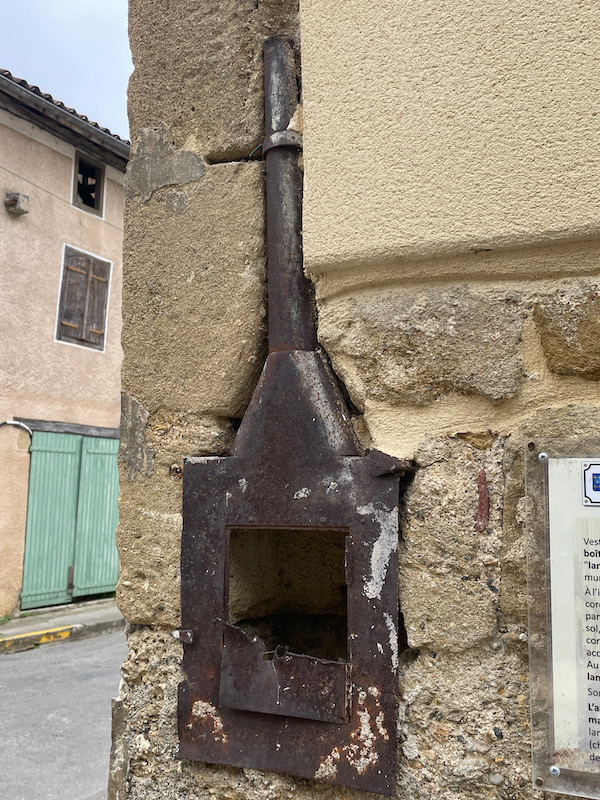
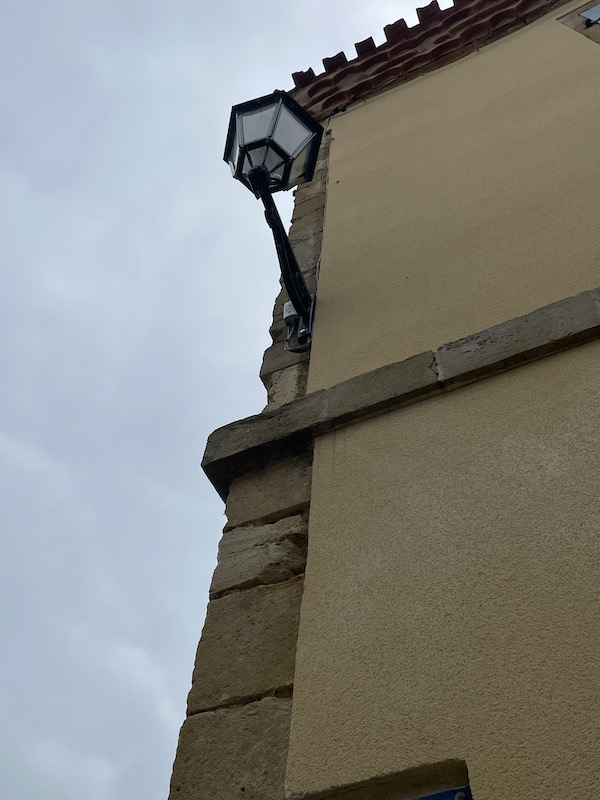
This is the all that remains of a former Augustinian convent here. It is really nice that the façade, doorway, and 14th century octagonal bell tower have been saved. The convent dates from the 14th and 15th centuries. The Augustinian monks did not live in seclusion, but rather, among the population. This allowed them to beg and benefit from the generosity of the local inhabitants and merchants. The church entrance on the right is now the village hall (which this weekend will be the voting location for the town). Passing under the doorway to the left, you enter a porch with the city's coat of arms in the keystone: 5 fleurs-de-lys on the left and 2 keys back-to-back on the right. The fleurs-de-lys indicate that this was once a royal bastide and the 2 keys, representing power and loyalty, are for the abbot of the convent and the king. (I added a picture of one of the information plaques because the picture doesn't clearly show the parts of it).
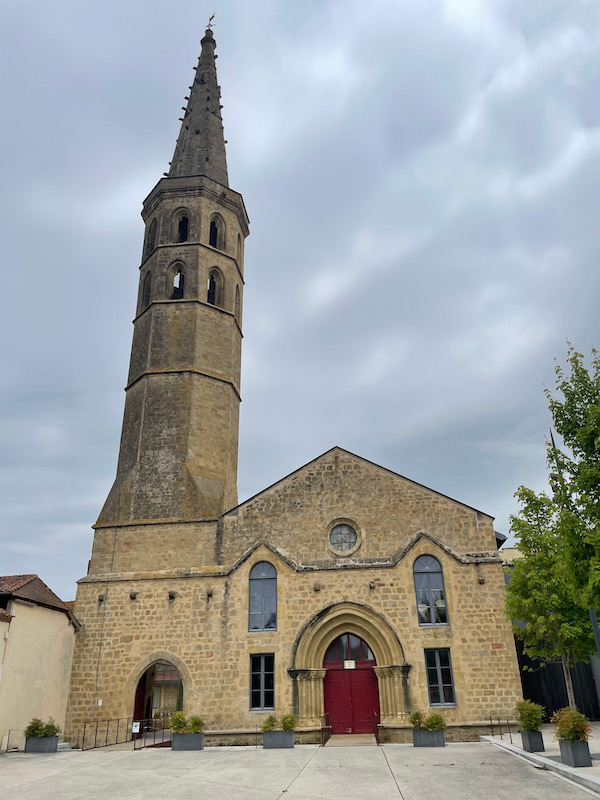
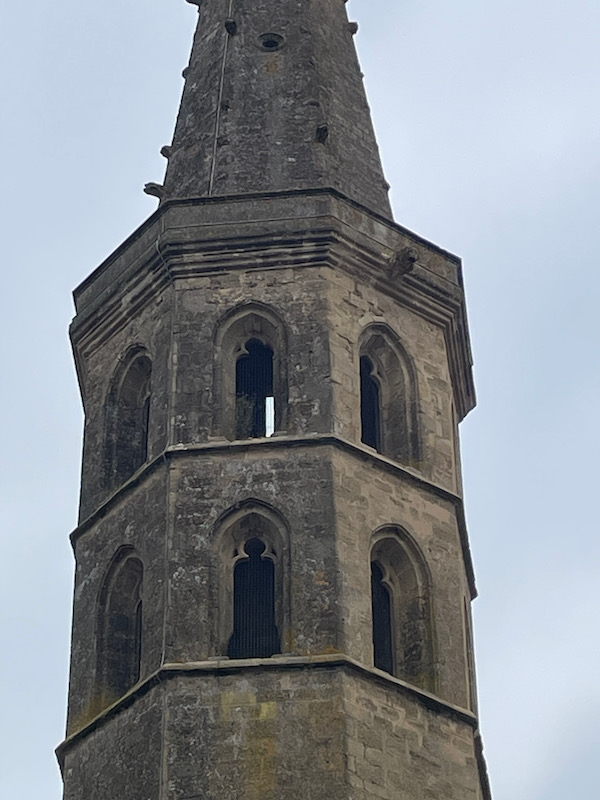
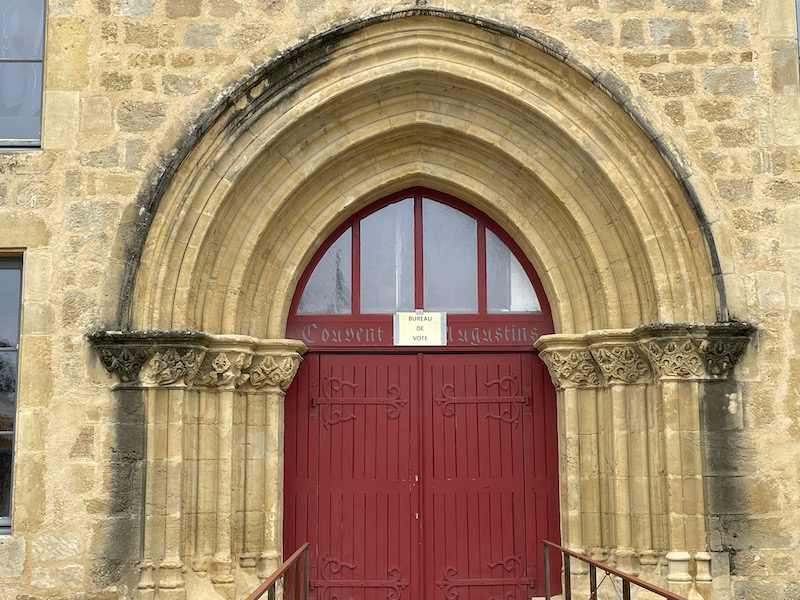
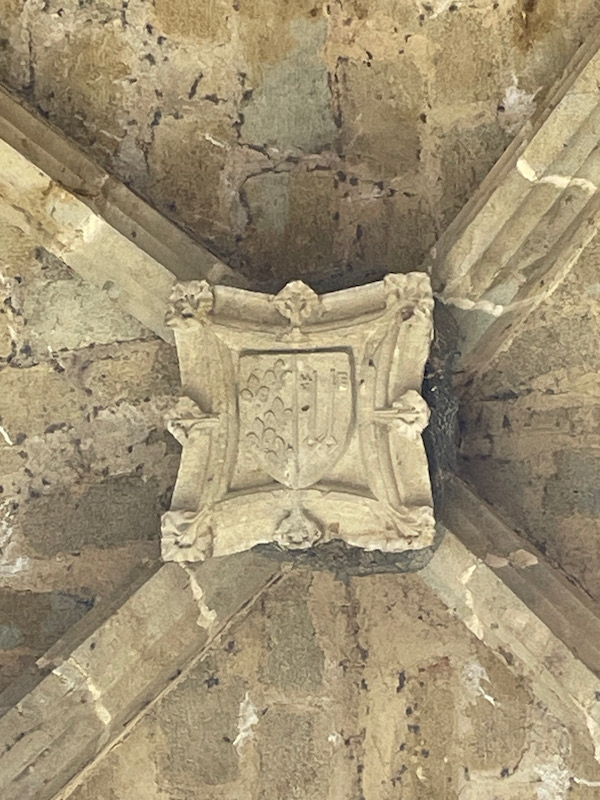
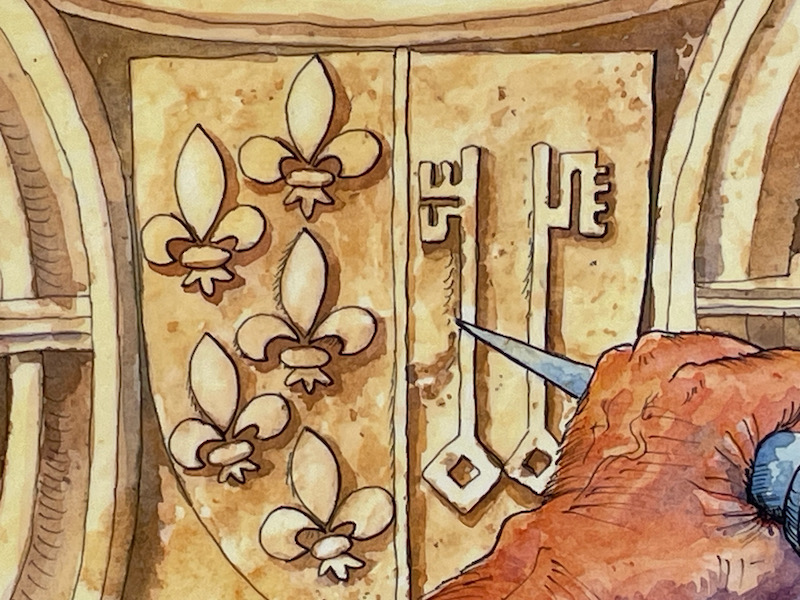
You emerge into what was the cloister, which is now totally gone. The town dismantled it and sold off the stones because it didn't have enough money to maintain all of the religious buildings. Supposedly, the South gallery of the cloister was purchased by the William Randolph Hearst and is today part of the Hearst Castle in California, having been installed around doors and windows in a large dining room (not still together in the form of a cloister gallery). Recently, an artist made a wire mesh sculpture to show a bit of what the gallery would be like, without showing any of the decorative elements. At the end is the immense fireplace of the monks' refectory.
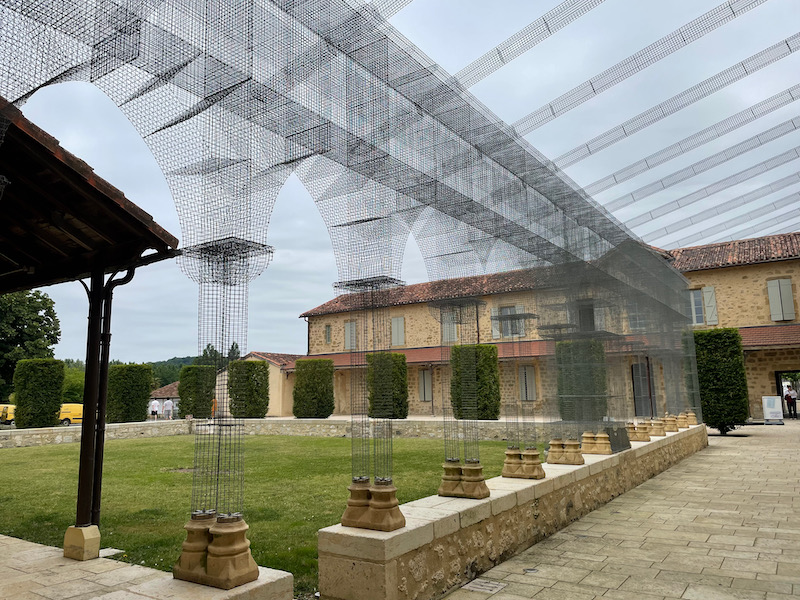
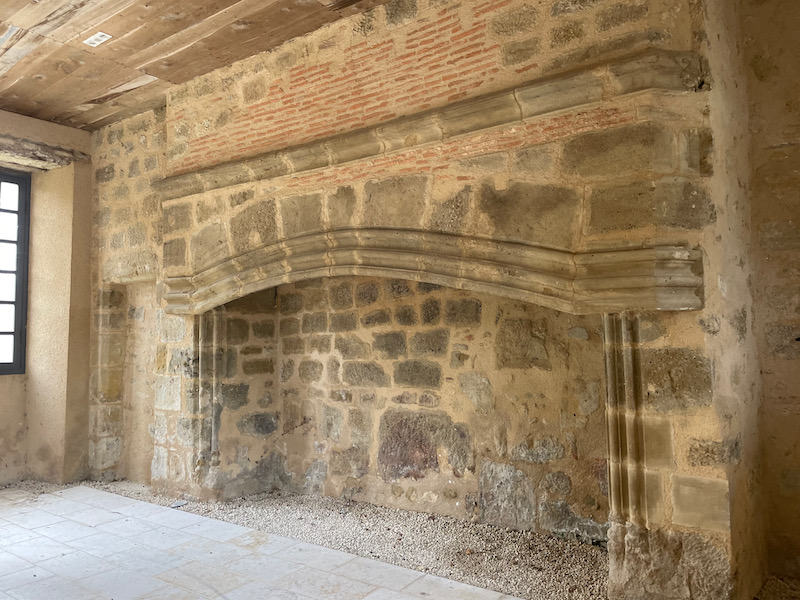
Lucy decided to check out the grass in the garden area.


Behind this is a statue of Wynton Marsalis (from the Jazz in Marciac festival) and a large auditorium where I think the larger "not free" concerts are held.
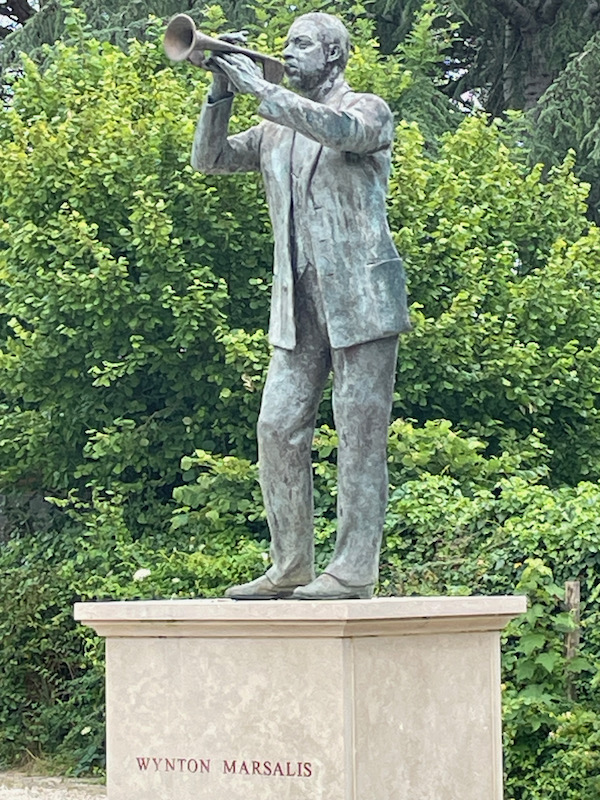
There is an interesting legend about the town and a chapel. In 1654, the black plague came through the Gers and 400 people in Marciac died in the span of 9 months. A young girl was about a kilometer from town, gathering a bundle of wood. She sat down at the base of a tree and saw a halo of light. The Virgin Mary appeared in this halo and promised to protect the town of Marciac from the plague in exchange for the construction of a small chapel. This chapel, which was completed in 1665 and rebuilt in 1887, is just outside of town at the spot of this vision.
Back in town is the Eglise Notre-Dame de l'Assomption, a 15th century Gothic building with a square bell tower and porch. The metal gate on the Western porch is from the 18th century.
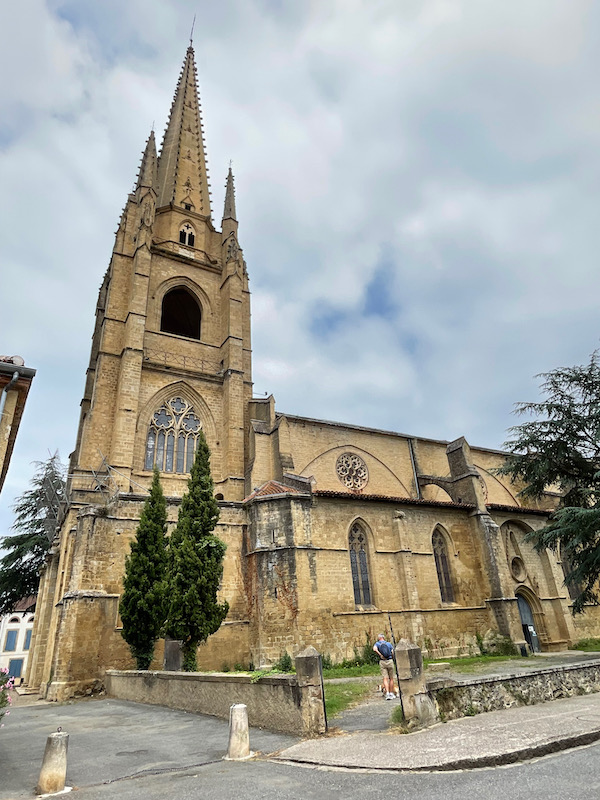
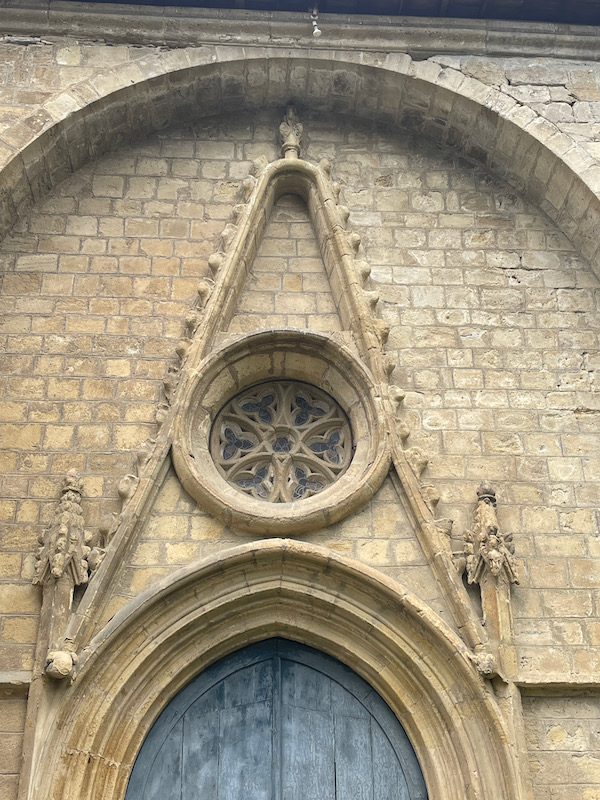
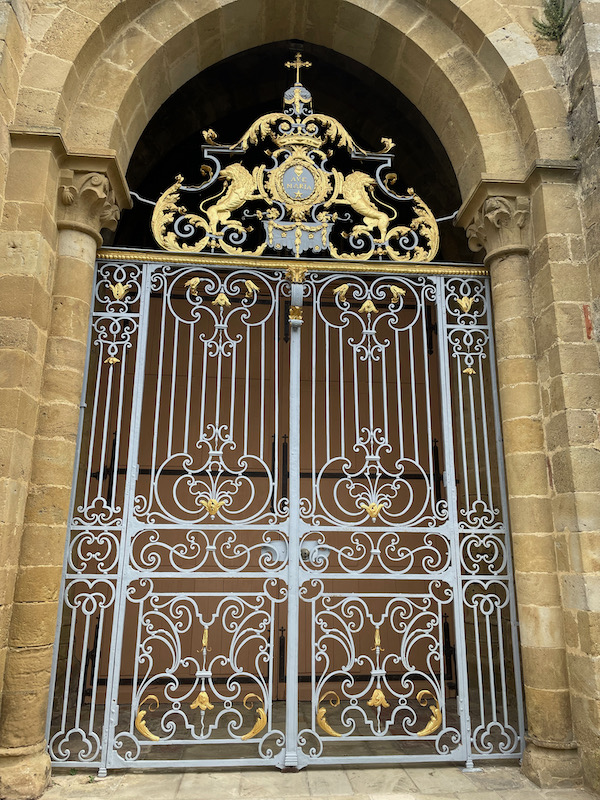
Inside, you can see the Gothic points in the ribbed ceiling vaults and the side chapels. I took a few pictures of some of the decoration, including the 18th century altar and ciborium, but the really interesting part is what comes next.
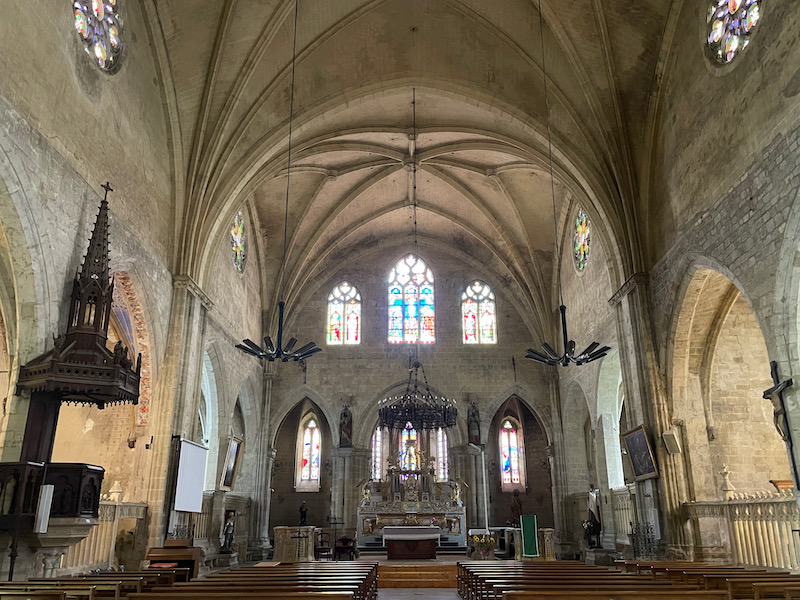
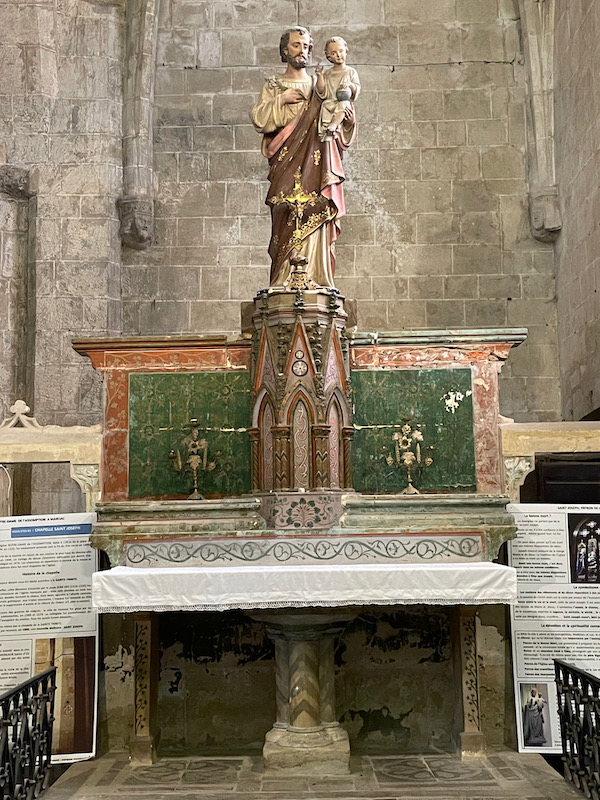
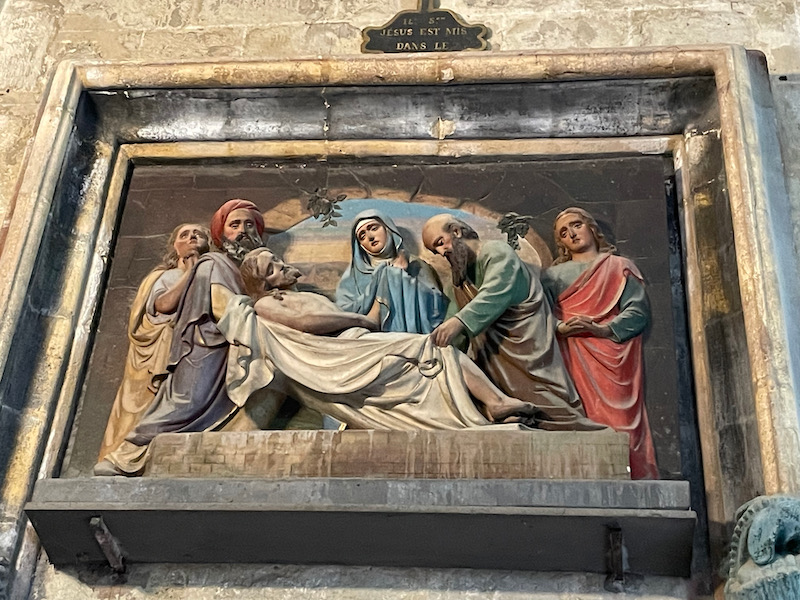
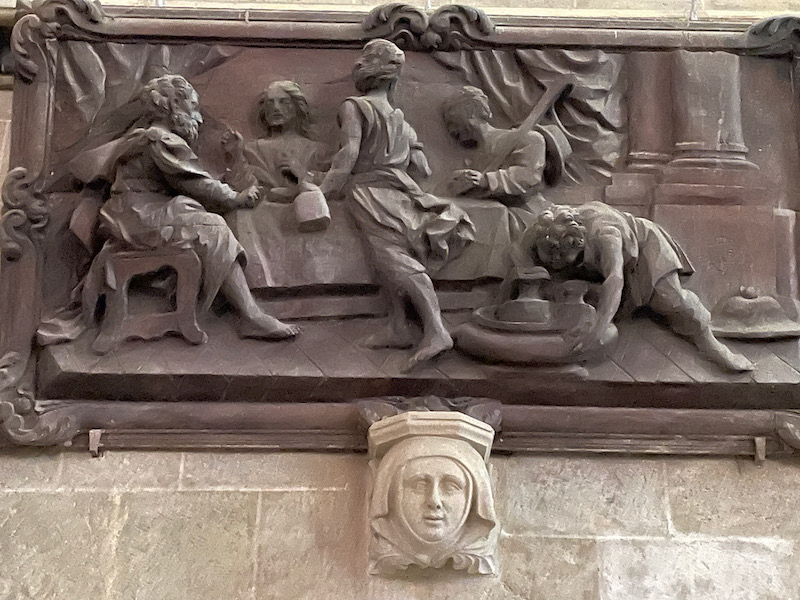
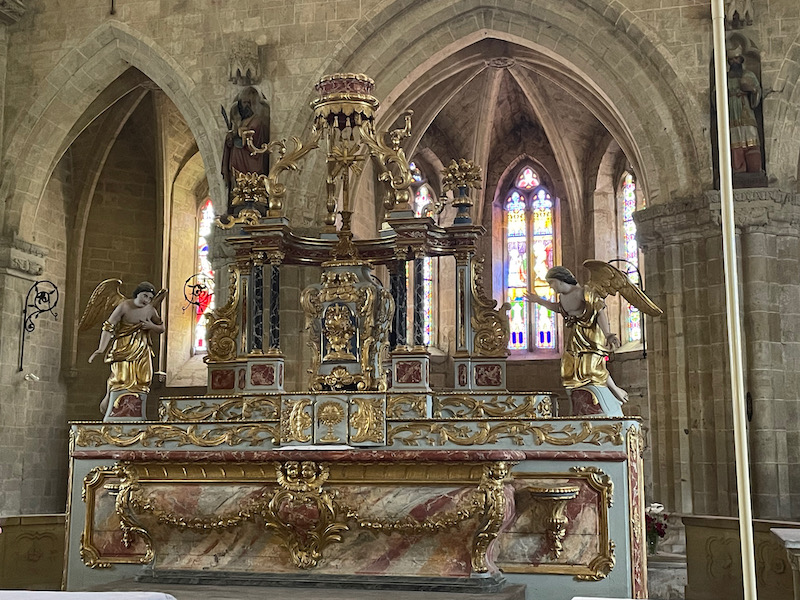
Remember seeing the 18th century metal gate on the Western portal? You can't enter through that door anymore but you can go to the back of the church and exit into the porch under the tower. The doorway here is totally different than the interior of the church ... very decorated, very colorful. In the center of the doorway is a statue of the Virgin and Child. On the tympanum above that are paintings and statues representing the crucifixion of Jesus, with 2 musical angels on either side. Above shows him after his Ascension into heaven, seated on a throne, his hands still bearing the marks of the crucifixion.
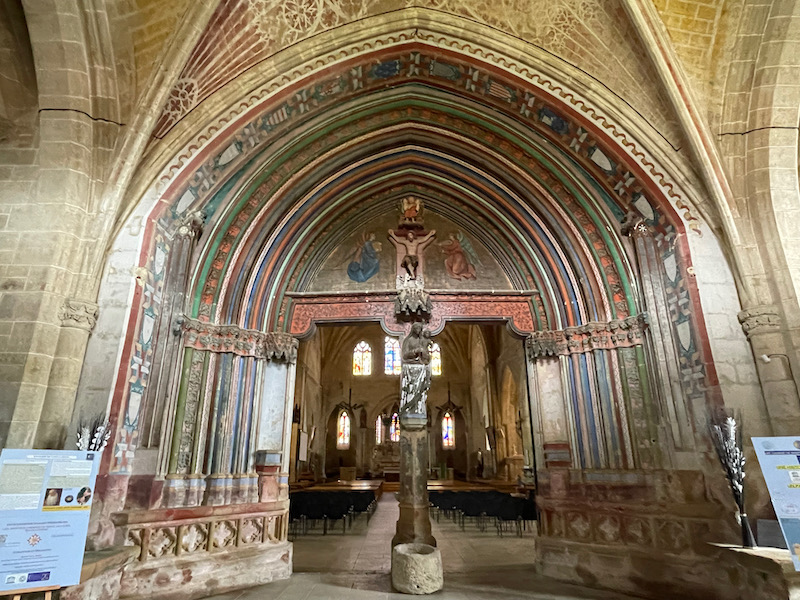
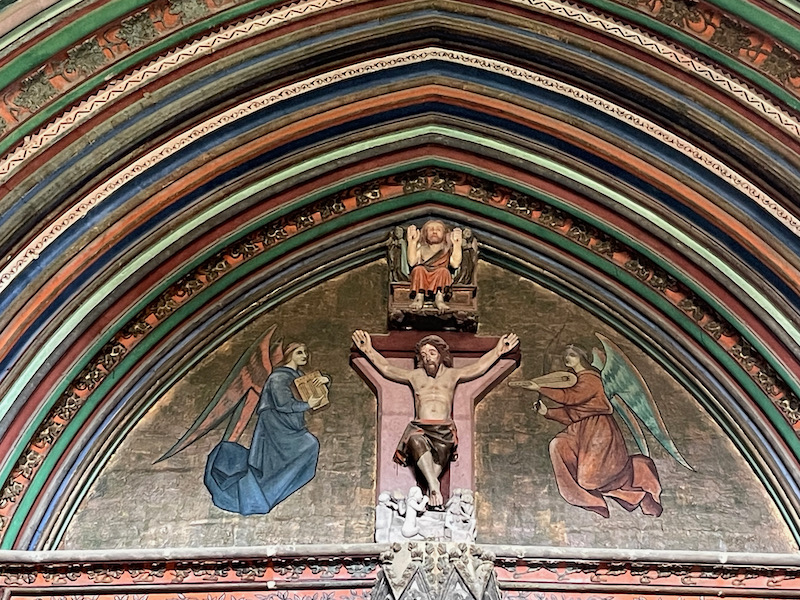
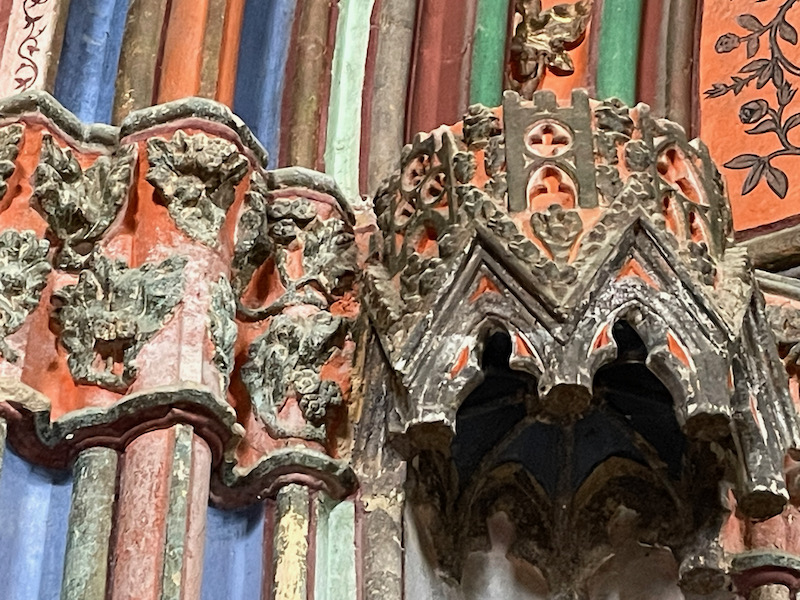
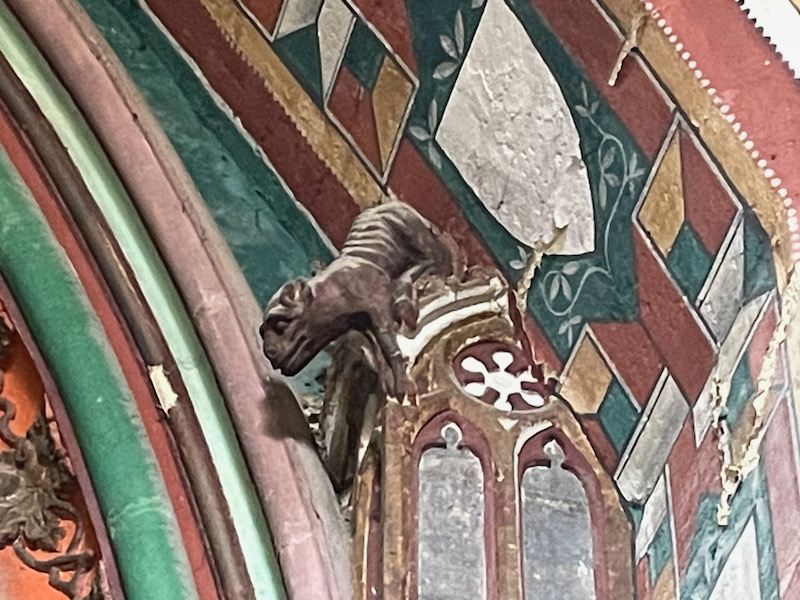
Also in the porch is a sculpture group representing the entombment of Jesus, dating from the 19th century.
